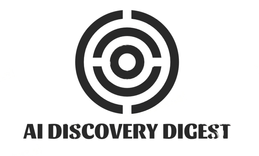The insurance industry is on the brink of a technological revolution. Artificial Intelligence (AI) has emerged as a game-changer, promising to reshape how companies operate and engage with their customers. Imagine a world where tedious paperwork and long processing times are relics of the past. Instead, intelligent systems analyze claims in seconds, provide personalized policy recommendations, and streamline workflows seamlessly.
As competition intensifies, insurers must adapt or risk falling behind. AI automation offers more than just efficiency; it can enhance customer experiences and drive innovation across every facet of the industry. The future looks bright for those ready to embrace this digital shift. Let’s explore how AI is transforming insurance workflows into agile processes that benefit both providers and clients alike.
Current Challenges in Insurance Workflows
Insurance workflows today face a myriad of challenges. Manual processes often lead to inefficiencies, causing delays that frustrate both employees and clients. Paperwork piles up, creating bottlenecks.
Data entry errors are another concern. Inaccuracies can result in costly mistakes, impacting policyholder trust and satisfaction. These issues arise from the heavy reliance on traditional methods over digital innovations.
Regulatory compliance adds to the complexity as insurers must constantly adapt to changing laws and guidelines. This creates additional layers of oversight that slow down operations further.
Customer expectations have evolved dramatically. Clients now demand faster responses and seamless interactions across multiple channels—something many companies struggle to deliver consistently.
Integrating legacy systems with modern technology proves difficult for many organizations, leading to fragmented workflows that inhibit overall productivity and innovation in the insurance space.
Benefits of AI Automation in Insurance Workflows
AI automation brings a transformative edge to insurance workflows. Speed is one of its standout advantages. Routine tasks that once took hours can now be completed in mere minutes.
Cost efficiency is another significant benefit. By automating repetitive processes, companies can reduce labor costs and allocate resources more strategically. This allows for better investment in innovation and customer service.
Accuracy also sees a boost with AI systems handling data entry and analysis. Human error diminishes when algorithms manage these tasks, leading to fewer mistakes and improved compliance.
Personalized experiences become possible through AI insights. Insurers can tailor products based on individual client needs using data analytics, driving customer satisfaction higher than ever before.
Enhanced decision-making capabilities emerge as AI tools sift through vast amounts of data quickly. Insurers gain valuable insights that were previously hidden within complex datasets, empowering them to make informed choices swiftly.
Case Studies of Companies Using AI Automation in Insurance Workflows
Lemonade, a tech-driven insurance company, has transformed claims processing through AI. Their virtual assistant, Mimosa, handles everything from policy issuance to claims management within minutes. This efficiency not only enhances customer satisfaction but also reduces operational costs.
Another example is Allstate’s use of machine learning algorithms for underwriting. By analyzing vast amounts of data in real-time, they can assess risk more accurately and tailor policies accordingly. This leads to better pricing strategies and improved customer targeting.
MetLife stands out with its chatbot technology that aids customers in navigating their insurance options. The result? A seamless experience that keeps clients informed while freeing up agents’ time for complex queries.
These case studies illustrate how innovative companies are leveraging AI automation to streamline workflows and enhance service delivery in the insurance sector.
Steps to Implement AI Automation in Insurance Processes
Implementing AI automation in insurance processes starts with a clear assessment of current workflows. Identify bottlenecks and areas ripe for enhancement. Engaging stakeholders early ensures that their insights guide the transformation.
Next, selecting the right technology is crucial. Research various AI tools tailored for specific tasks like claims processing or customer service chatbots. The goal is to find solutions that seamlessly integrate into existing systems.
After choosing technology, pilot projects can pave the way for broader implementation. Start small to minimize disruption while gathering data on efficacy and user experience.
Training staff is vital as well. Provide comprehensive education on new tools and encourage them to embrace change through hands-on workshops.
Continuously monitor performance metrics post-implementation. This ongoing review allows adjustments based on real-time feedback, ensuring that your AI initiatives remain effective and aligned with business goals.
Potential Impact on the Future of Insurance Industry
The future of the insurance industry is poised for transformation. As AI continues to evolve, its integration into daily operations will streamline processes. This shift could lead to quicker claims processing and more accurate risk assessments.
With predictive analytics, insurers can better understand customer behavior. Tailored offerings may emerge, enhancing client satisfaction and loyalty. Customers might find themselves enjoying personalized policies crafted just for them.
Fraud detection systems powered by AI are becoming increasingly sophisticated. They can analyze vast amounts of data in real-time, identifying suspicious activities before significant losses occur.
As automation takes on routine tasks, human resources can focus on complex problem-solving and relationship building with clients. This change not only improves efficiency but also enriches the customer experience.
The landscape will likely see new players emerging as technology levels the playing field between established firms and startups alike. Adaptation becomes essential for survival in this dynamic environment.
Conclusion
As the insurance industry continues to evolve, embracing AI automation presents a pivotal opportunity for transformation. The challenges faced by traditional workflows are significant, but with the right technology, these can be overcome.
AI not only streamlines processes but also enhances accuracy and customer satisfaction. Companies that have successfully integrated AI into their operations are already seeing substantial improvements in efficiency and productivity.
Implementing AI requires thoughtful planning and execution. However, organizations willing to invest in this change will position themselves as leaders in the market. As more companies adopt advanced technologies like machine learning and natural language processing, we can expect a shift towards a more agile and responsive insurance landscape.
The future of insurance is bright with AI at its helm. Embracing this change will not only benefit individual companies but also transform how customers interact with their insurers—making it a win-win situation for all stakeholders involved.


